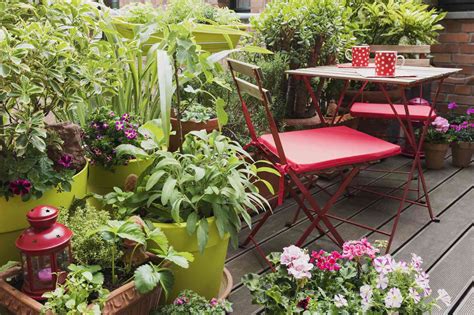The Hidden Benefits of Companion Planting for Your Balcony Garden
In today’s bustling urban environments, finding ways to bring nature into our living spaces is crucial. One way to achieve this is through balcony gardening, where the concept of companion planting can revolutionize the health and productivity of your plants. Whether you’re a seasoned gardener or a beginner, understanding how biodiversity and proper plant pairings can benefit your container gardening setup is key to creating a thriving green space. This guide delves into the practice of companion planting, its advantages, and practical applications for urban gardening.
Key Concepts of Companion Planting
At its core, companion planting is about growing different plant species together to enhance their growth and plant health. This method has been used for centuries, allowing plants to support each other by improving nutrient uptake, deterring pests, and promoting pollination. For those with limited space, like a balcony, it maximizes yield and beautifies the space. Understanding the types of plant partnerships can transform how you approach gardening strategies.
- Mutual Benefits: Some plants exchange nutrients and support one another. For example, legumes fix nitrogen in the soil, which can benefit nitrogen-loving plants like tomatoes.
- Pest Control: Certain plants repel harmful insects, while others attract beneficial ones. Marigolds, for example, are known to deter aphids.
- Shade and Support: Plants with tall growth can provide shade to those that need less direct sunlight, such as basil grown under tomatoes.
Historical Context of Companion Planting
Companion planting dates back to ancient agricultural practices. Native American tribes utilized the “Three Sisters” method, planting corn, beans, and squash together. The corn provided support for the beans, while the squash shaded the ground, preventing weeds. This technique enhanced yields and soil health long before modern gardening techniques emerged. Today, companion planting is seeing a resurgence, especially in urban environments where sustainability and maximizing space are priorities.
Current State Analysis: Balcony Gardening and Companion Planting
As cities become denser, more people are turning to urban gardening to grow food and improve air quality. Balcony gardens offer a personal green sanctuary, and companion planting elevates this by making plant care easier and more efficient. The lack of ground soil in container gardening can be compensated by choosing plants that work symbiotically. For instance, pairing flowers like nasturtiums with vegetables like peppers can keep pests at bay while enhancing the aesthetic appeal of your outdoor decor.
Practical Applications for Balcony Gardeners
To successfully incorporate companion planting into your balcony garden, you need to consider factors such as the size of your space, sunlight exposure, and container types. Here are some practical tips:
- Use Multi-Tiered Planting: Place taller plants like sunflowers or beans in the back of your garden, with shorter ones like lettuce or herbs in the front to maximize light access.
- Mix Edibles and Ornamentals: Combining flowering plants with edible ones can attract pollinators while providing food. Try pairing basil with petunias or tomatoes with marigolds.
- Opt for Containers with Good Drainage: Since space is limited on a balcony, ensure your containers are optimized for the plants you choose and that water can drain properly to prevent root rot.
Case Studies in Balcony Companion Planting
Several urban gardeners have reported success with companion planting on their balconies. Here are some examples:
| Plant Combination | Benefits | Outcome |
|---|---|---|
| Tomatoes and Basil | Improves flavor, repels pests | Better tasting tomatoes and fewer aphids |
| Lettuce and Radishes | Shade for radishes, prevents bolting | Both plants thrived despite hot conditions |
| Marigolds and Cucumbers | Repels nematodes | Healthier cucumber plants with fewer pest issues |
Stakeholder Analysis: Who Benefits from Balcony Companion Planting?
Balcony companion planting benefits multiple groups:
- Urban Gardeners: Increased plant productivity and pest control with minimal chemical use.
- Environmental Advocates: Promotes biodiversity in cities, contributing to local ecosystems.
- Balcony Enthusiasts: Aesthetic value is added with diverse plantings, enhancing outdoor decor.
Implementation Guidelines for Balcony Companion Planting
Getting started with companion planting on your balcony is simple:
- Research Plant Pairings: Look into which plants thrive together, such as beans and squash.
- Assess Your Space: Evaluate how much sunlight, wind exposure, and space your balcony has before deciding on plant combinations.
- Start Small: Test a few plant pairings first before expanding your balcony garden.
Ethical Considerations in Urban Gardening
Companion planting promotes organic growing practices, reducing reliance on chemical pesticides and fertilizers. However, sourcing plants ethically, especially those native to your region, ensures that your balcony garden supports local biodiversity rather than harming it. Additionally, consider water conservation techniques to make your urban garden more sustainable.
Limitations and Future Research
While companion planting offers numerous benefits, it is not without limitations. The restricted space on a balcony can limit the variety of plants you can pair. Furthermore, certain combinations may not thrive in containers as they would in open ground. Future research could explore vertical gardening solutions and advanced container technologies to overcome these challenges. Additionally, more studies are needed on how urban microclimates impact companion planting success.
Expert Commentary on Companion Planting for Balcony Gardens
Experts agree that companion planting is an excellent strategy for maximizing space and improving plant health in small urban gardens. Its ability to reduce pests, improve yields, and contribute to biodiversity makes it a standout practice. However, understanding plant needs and experimenting with different combinations is essential for success. As one expert noted, “Companion planting transforms balcony gardening into a dynamic ecosystem, but it requires patience, observation, and a willingness to adapt.”


